Over the summer I went to London to bake a loaf of bread. I took four containers of starter (bringing extra in the event any were pulled by security), and fed them as soon as I got off the plane. Within hours a sourdough flood threatened all of Clapham.
To push back the tide, I started the bread. But I didn't want to pitch the remainder and so, from an excess of sourdough (and, needing a snack to go with my Weston’s), a star was born.
The star was a cracker. Now usually when I make crackers I do something like the rolled and seeded lavash from my book or the firecrackers I wrote earlier this year. But on that day I had a different thought. What if I just added salt and oil to my overripe (when I say overripe, I didn’t get around to this until the second or third day I was there) starter and bake it? Would the sloppy mixture come out snappy and crisp? Would it be too sour? Would it be too thick or brittle? Let’s see.
I poured some into a bowl. It was runny like thick cream: no bubbles, no activity, very vinegary and piquant. I added salt, olive oil, and a little whole wheat flour — eyeballing the amounts — and stirred it to combine, then spread the mixture onto a sheet of parchment. I added seeds and spices from the cupboard to garnish, threw it in the oven, set a short timer, and sipped on my cider.
Sometimes during baking we get a whiff of what’s to come. Drifting from the kitchen, minutes before even the first peek, a bit of vapor snakes from the oven. It curls across the ceiling, swirls, then drops to an unsuspecting face. Full of organic acids, aldehydes, alcohols, and a thousand other compounds, all byproducts of days worth of fermentation, and now, baking, it’s an aroma that is unrivaled in all the world. At one point I asked the question: Do you know what bread baking smells like in heaven? And answered it myself: It smells like bread baking. Or, on that day in London, sourdough crackers.
Not only did they smell delicious — toasty, cheesy, nutty, very sourdough and bready — what had been opaque (taupe?) had transformed into golden sheets of something akin to weathered papyrus with coarse salt, sesame seeds, and black pepper on top. In spots they were shiny, and along the edges, golden hues turned mahogany.
By the time they were done the aroma had breached every wall in the building. Small children asked parents, floors away, for a snack without knowing why. A magpie in the park hopped, stopped, cocked its head and considered a closer look. The oven itself grew two sizes bigger with the pride of what it contained.
I couldn’t wait. With my cider in hand I broke off a chunk that cracked with a snap louder than it should have. I waved the piece in the air like a polaroid then bit. And I might have cursed out loud. I probably ate the entire tray. I realized too late that cider in the UK is 8% alcohol. After finishing the bottle with a shot of jet lag I fell into bed, still chewing, and slept.
The loaves I made that week went well and I headed home. Since that time I have continued to make the crackers, adding small tweaks and actually measuring things. I also had the idea that, rather than using a sheet of parchment (which tended to deform during baking), they might bake better on the bottom side of a buttered sheet tray. It works really well. If I turn on the oven, the crackers are on the tray, ready to bake before it’s even preheated.
While delicious as a standalone, it’s nice to have something more substantial to gather around. Thinking of things that would pair well and, given that our CSA has had lots of carrots, I wrote this roasted carrot and whipped feta recipe as a side.
Happy crackers, y’all.
Martin
While these crackers come together about as quickly as a commercial break, you’ll want to mix some sourdough up a few days (at least 12 hours, up to three days) before you want them and let it ripen at room temperature. Here, as with many things in baking, time will pay you back with flavor dollars. Don’t skimp.
A quick note on starter condition and its effects on the crackers. *First, everything that I’m referring to as starter here is fed with equal parts flour and water by weight. A very ripe starter, one that’s so mature that it’s thin, literally broken (with all the acid, the gluten degrades), and flowing like thick cream, will mix together easily and present like a pancake batter. It will bake up as a thinner, more delicate cracker. If, when you mix things together the mixture seems significantly more loose than pancake batter you may want to add an additional small quantity of flour (15g or so). At the other end of the spectrum, a young starter (maybe only 12 hours old) will hold together, resist spreading, and bake just a little higher, and darker (all the simple sugars haven’t been metabolized). Both are delicious, if very different.
Crispy Crackers
Yield: 1 half sheet tray of crackers (I recommend doubling the recipe)
Sourdough culture, 20g
Water, 75g
All-purpose flour, 75g
12 hours or up to several days before you want crackers, mix everything to combine and leave at room temperature to ripen. In the early stages the batter will hold the air and rise. As activity slows and acid increases, larger bubbles will transition to a smaller size and the level will fall some. I like to push the leaven until it’s at least two days old. But I also enjoy the crackers made with a younger leaven. Discard may also be used. See my note above regarding extremely thin cultures.
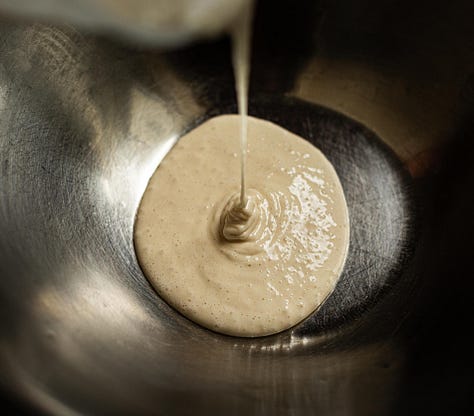
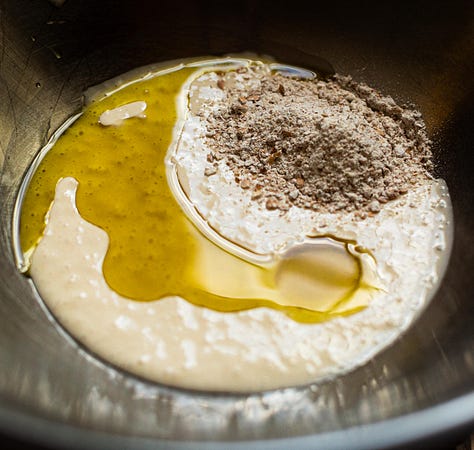
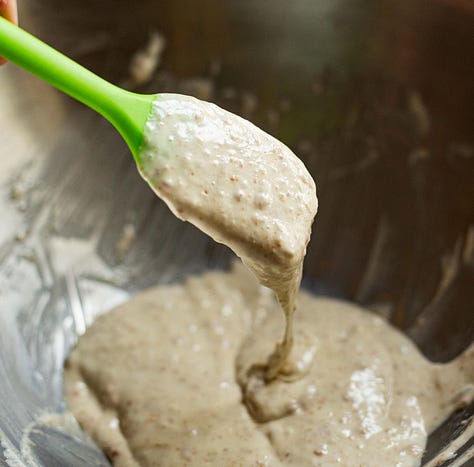
Sourdough starter, very ripe, 170g
Whole wheat flour*, 15g
Olive oil, 15g
Salt, 3g (½ t)
*Rye, spelt, buckwheat, white whole wheat — any whole grain flour will work.
Preheat the oven to 375°F with a rung on a middle rack.
In a small bowl, combine all the ingredients, stirring with a rubber spatula until smooth.
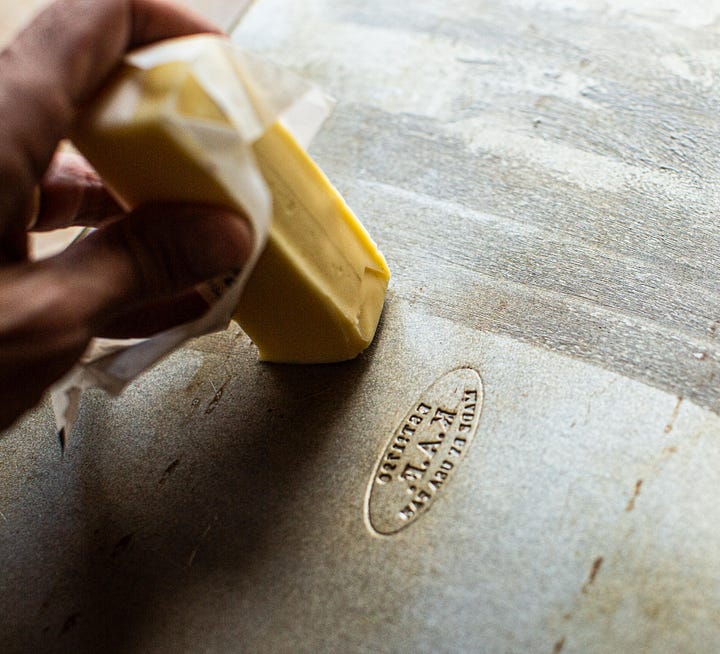
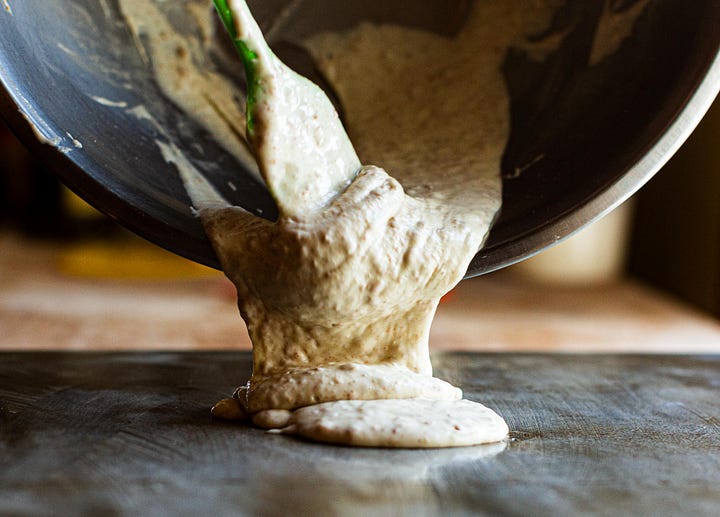

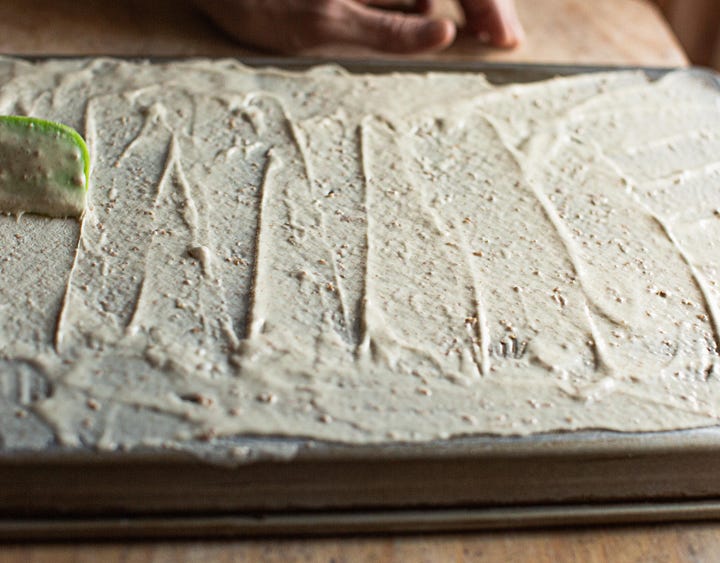
Lightly butter the bottom side of the flattest, most perfect, (clean) half sheet tray that you have.
Dump the batter onto the upside-down sheet tray, spreading it with a rubber spatula to as even and smooth a layer as possible, leaving no gaps and extending the batter all the way to the edge, but not over. Take your time, be thorough and exacting. Note: if you want crackers that are a more uniform size or shape, after spreading the batter, drag the sharpest point of a spatula through the batter making a grid. Because the batter is soft, the lines won’t be perfectly tidy.
Sesame seeds, 15 - 30g
Coarse salt, 3g (½ t)
(Any other favorite spice from nigella seeds to chili flakes, to whole cumin, etc. Optional)
Garnish the batter with whatever you like. I keep it simple: 15g of sesame (use more if you like), 3g of salt, and maybe a little pepper or dried chili flakes. If you like nigella, cumin, smoked paprika, or even finely grated hard cheese, go for it.
Load the crackers into the oven and bake for 8 minutes then rotate and bake until deep golden brown, another 8 to 10 or so minutes or so. Rotate as necessary to ensure as even a bake as possible. When the color you like is reached, turn off the oven, crack the door, and let them coast and dry further to ensure they are snappy. (Sometimes I let them coast, sometimes I eat them immediately.)
And, since you made a double batch, here’s something to go with them.
Roasted Carrots with Whipped Feta
Roasted Carrots
Carrots, raw, 300g, chopped into 1 - 2” pieces
Salt, a pinch
Place the carrots and salt in a medium pot, cover with water and cook with a lid on at a low boil until tender, about 20 minutes.
Salt, 3g, (½ t)
Smoked paprika, 2g (1 t)
Cumin seed, 2g (1 t)
Olive oil, 15g (1 T)
Honey, 15g (2 t) *spicy honey if you have it
Garlic, 1 large clove, cut into pieces
Pepper, 1g (½ t)
Drain the carrots and toss with the spices. Place in a cast iron pan in a single layer and broil until charred in spots, 5 to 10 minutes.
Salt, 3g (½ t)
Lemon juice, 20g (about ½ a lemon)
Tahini, 20g
Olive oil, 35g
Pepper, 1.5t (½ t)
Place the broiled carrots and any seasonings from the roasting pan into a food processor fitted with a cutting blade and add the additional seasonings. Purée until smooth. Reserve until use.
Whipped feta
Feta, 100g (about 4 ounces), drained
Greek yogurt, sour cream, or cream cheese, 15g (1 T)
Olive oil, 15g (1 T)
Garlic, ½ clove (1 t)
Lemon zest, ½ lemon
Combine everything and process in a food processor until smooth. Note that if you let the processor run too long the mixture will warm and thin. If it’s too thin for your liking, chill briefly to set.
To serve.
Place the roasted carrot purée on a plate, spreading to form a ¾” thick layer. Add the whipped feta to the middle. Garnish with honey, sesame seeds, smoked paprika, olive oil and chili flakes or cayenne, if desired.
Enjoy!
Martin

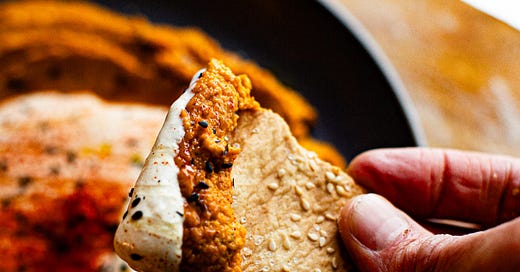

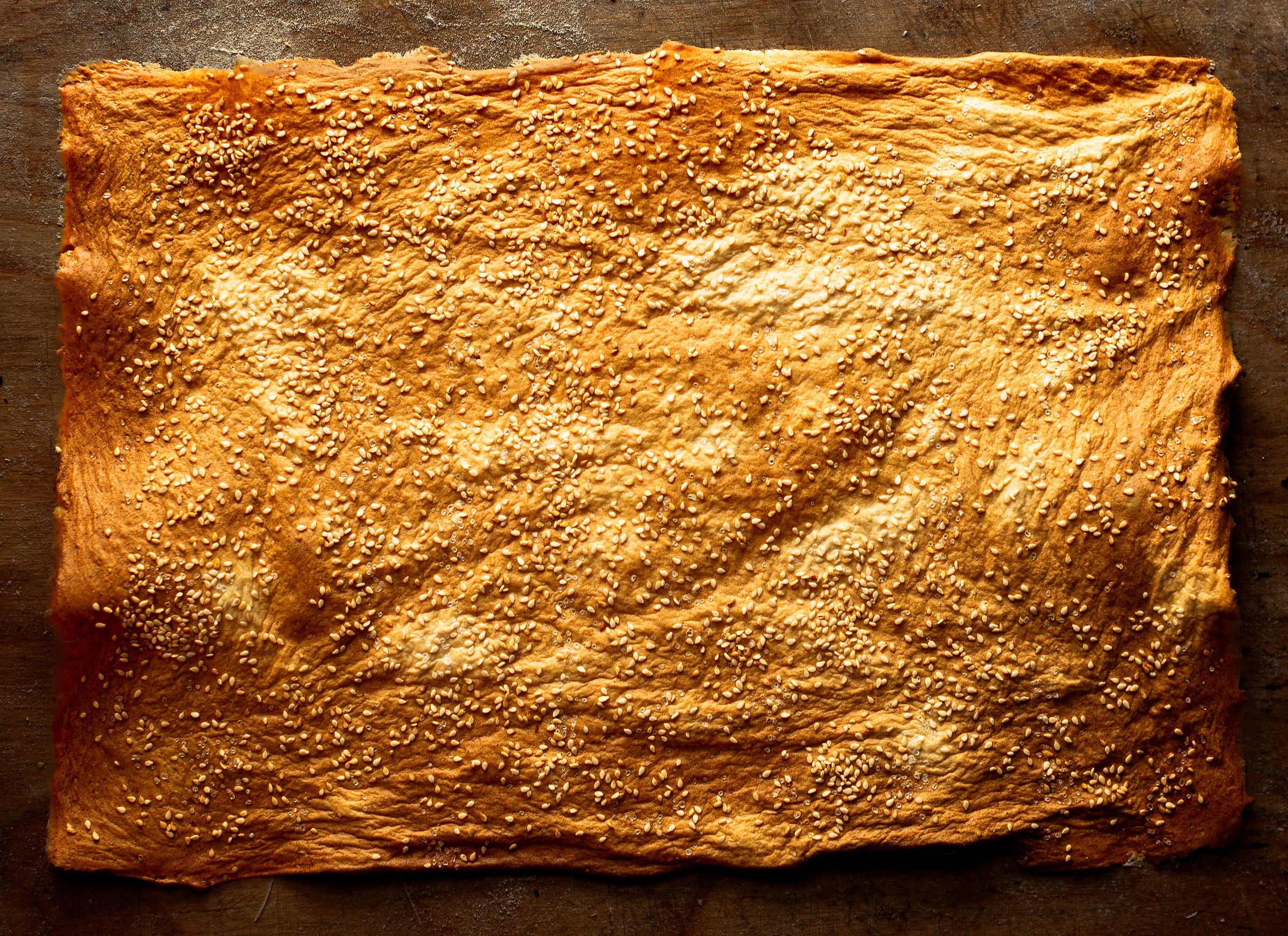

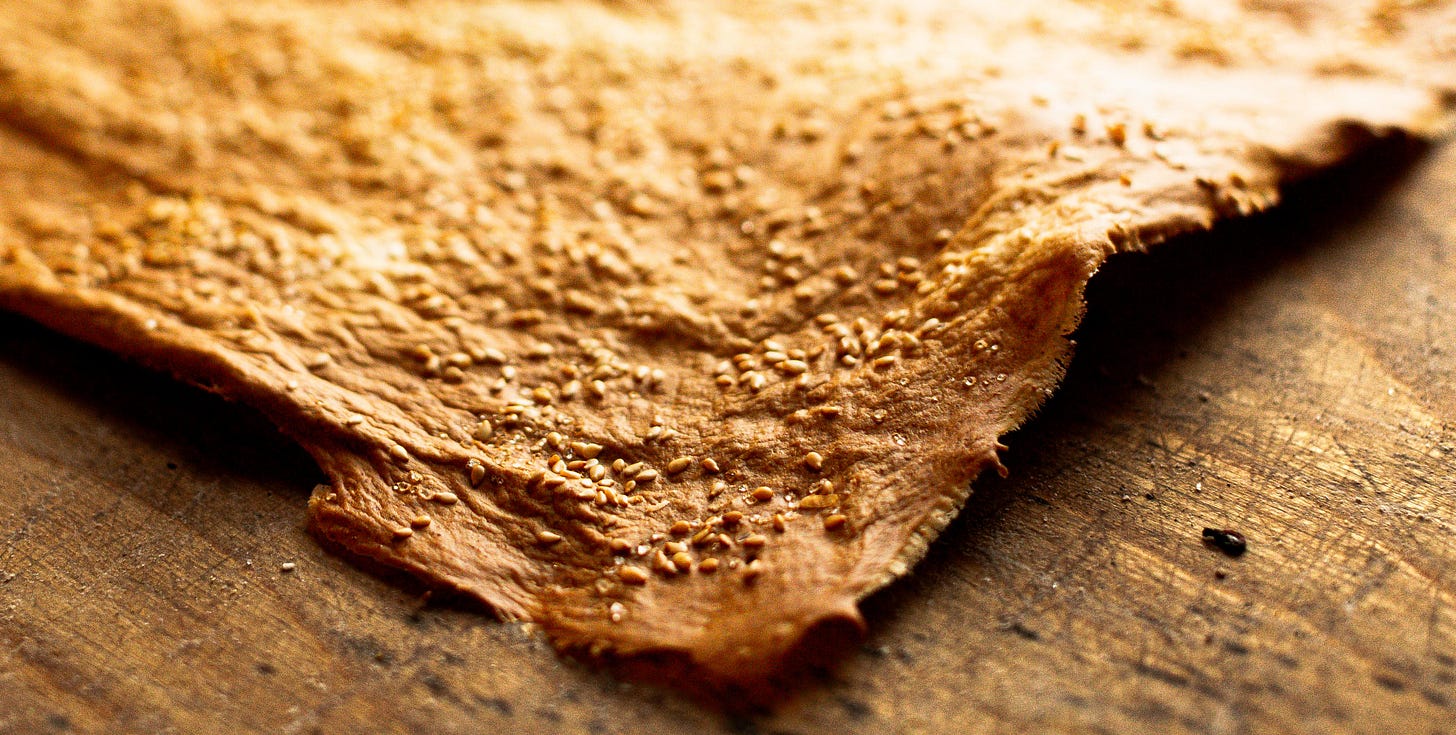
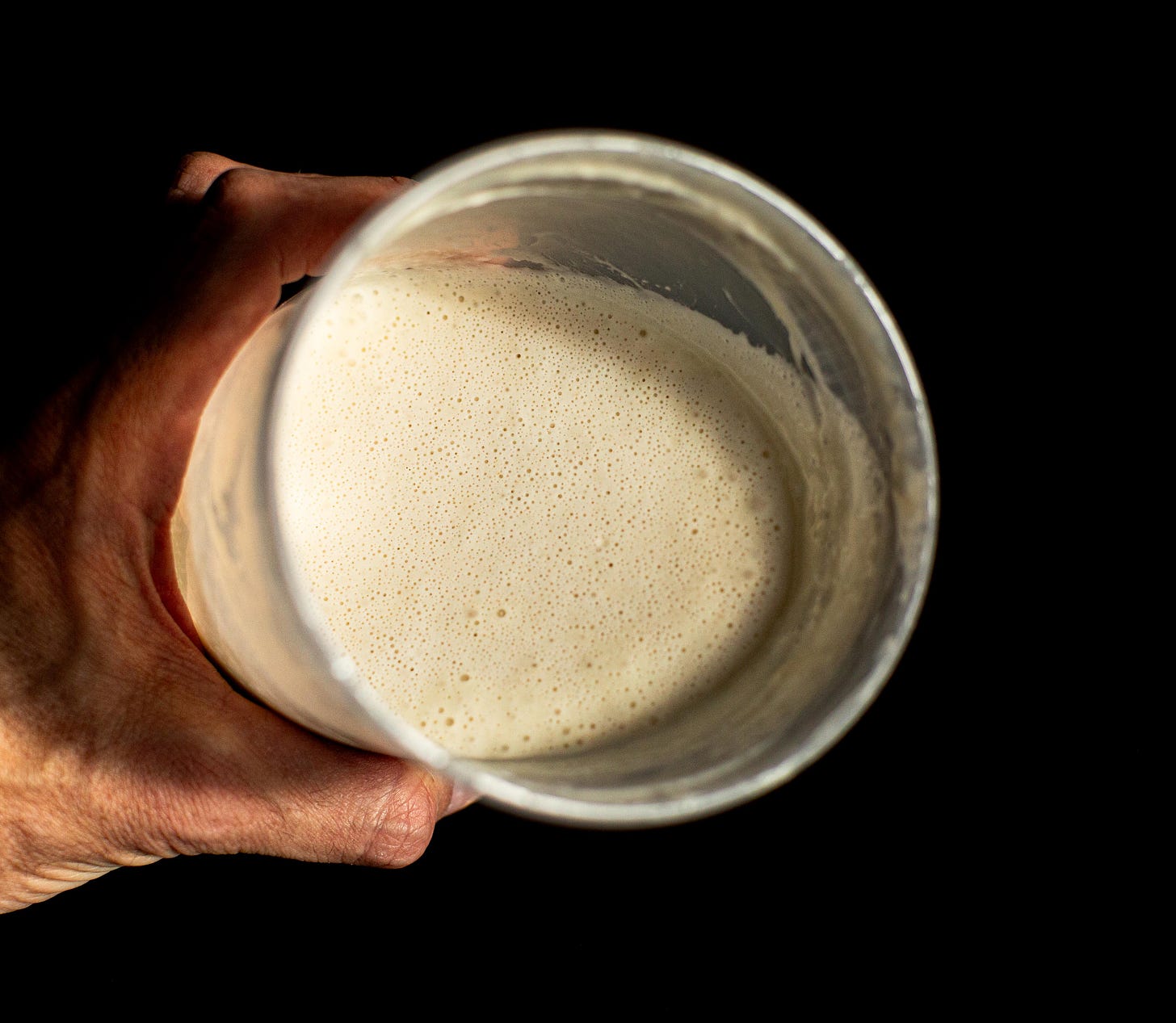

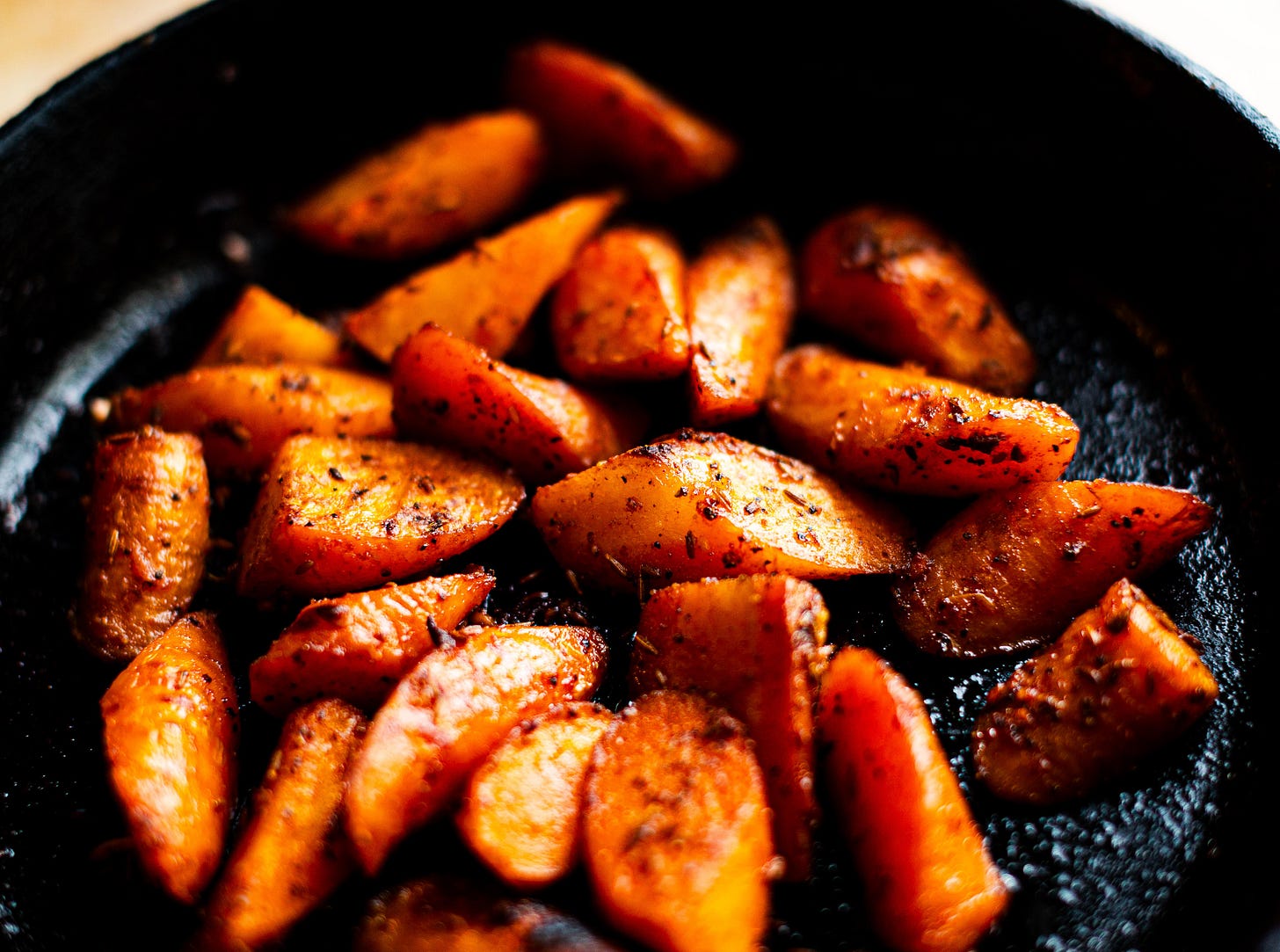
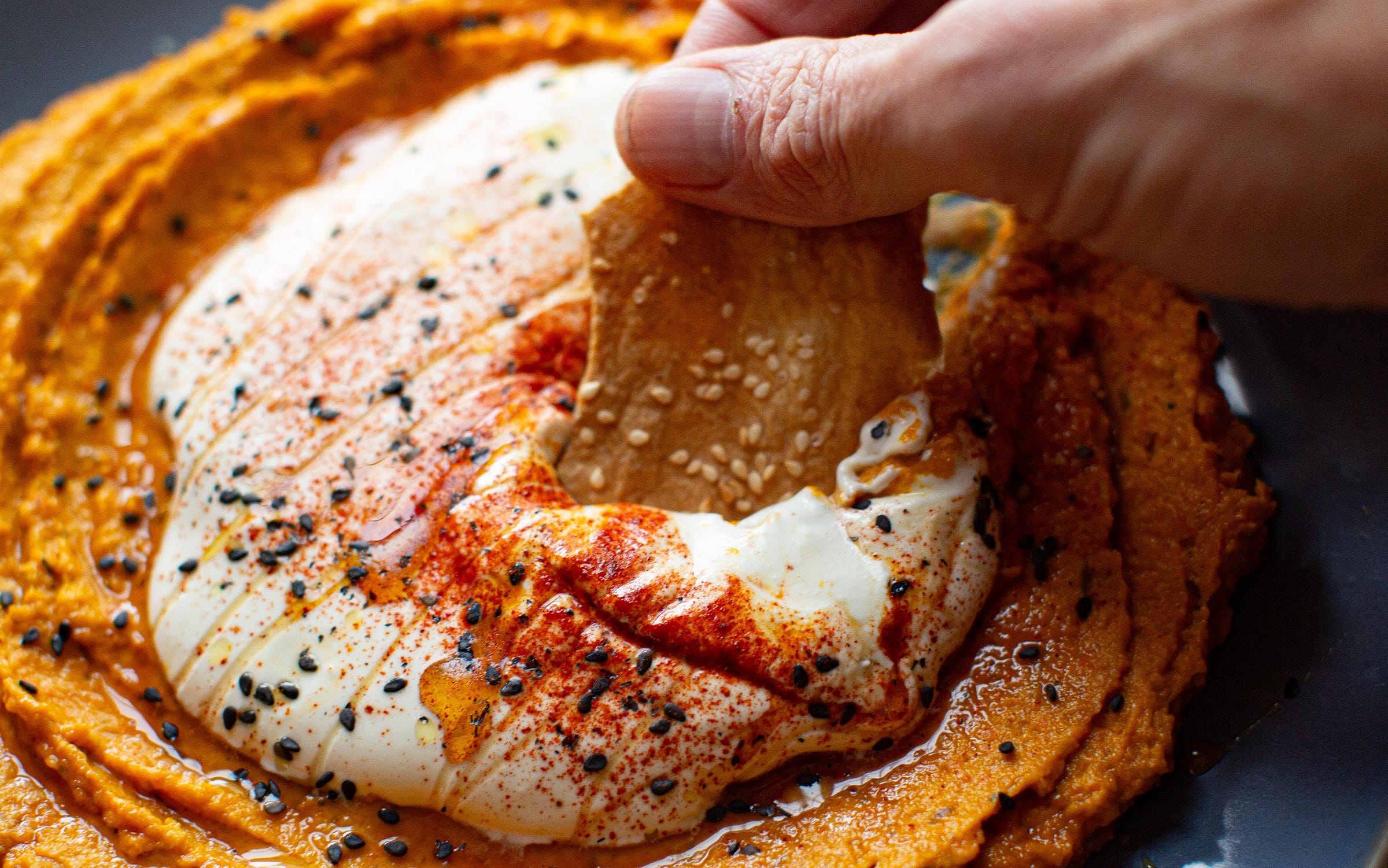
I enjoyed reading this so much! You certainly have a way with words, it pulls me right into your kitchen as I read. I can’t wait to whip all this up and will be watching for my oven to swell with pride too :)
Thanks for sharing!
Martin you are so awesome with your words… I am definitely making these weathered papyrus this weekend for my family…
Love from India 🙏